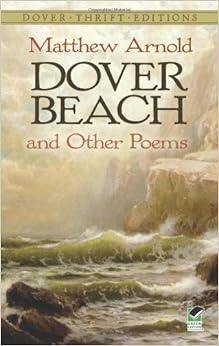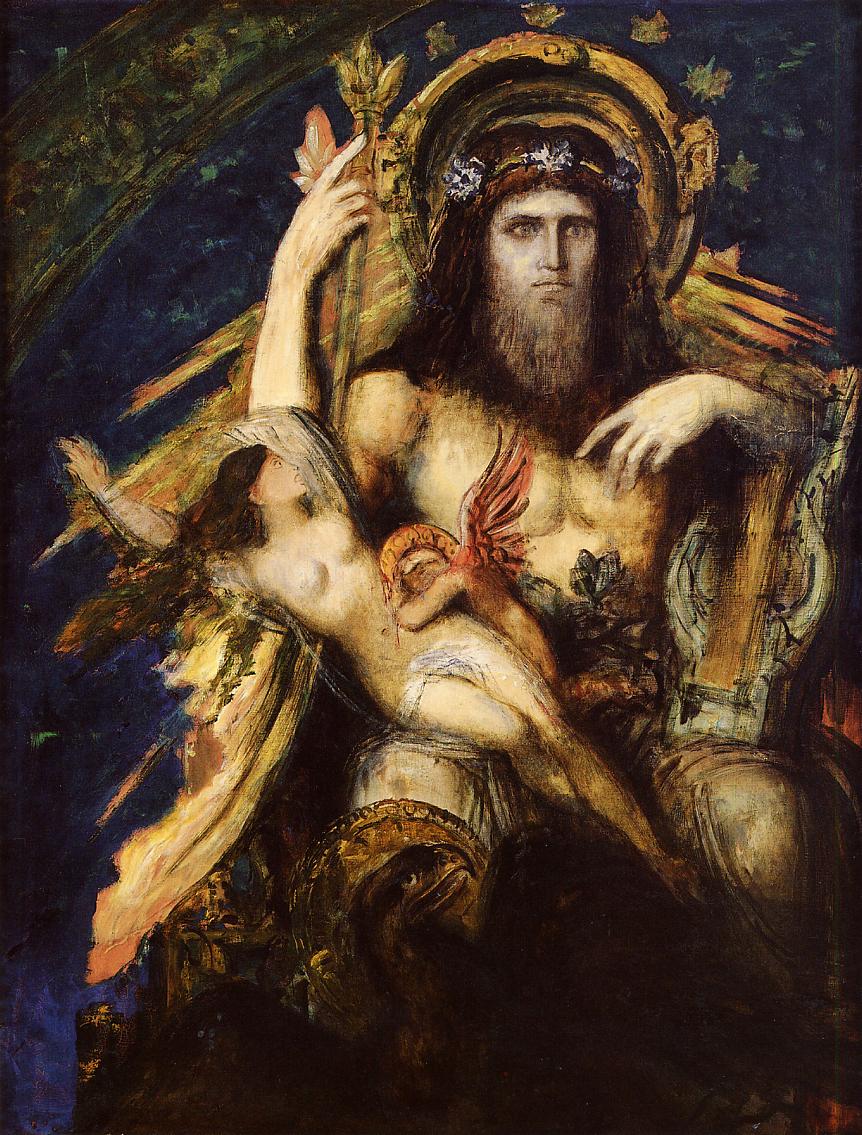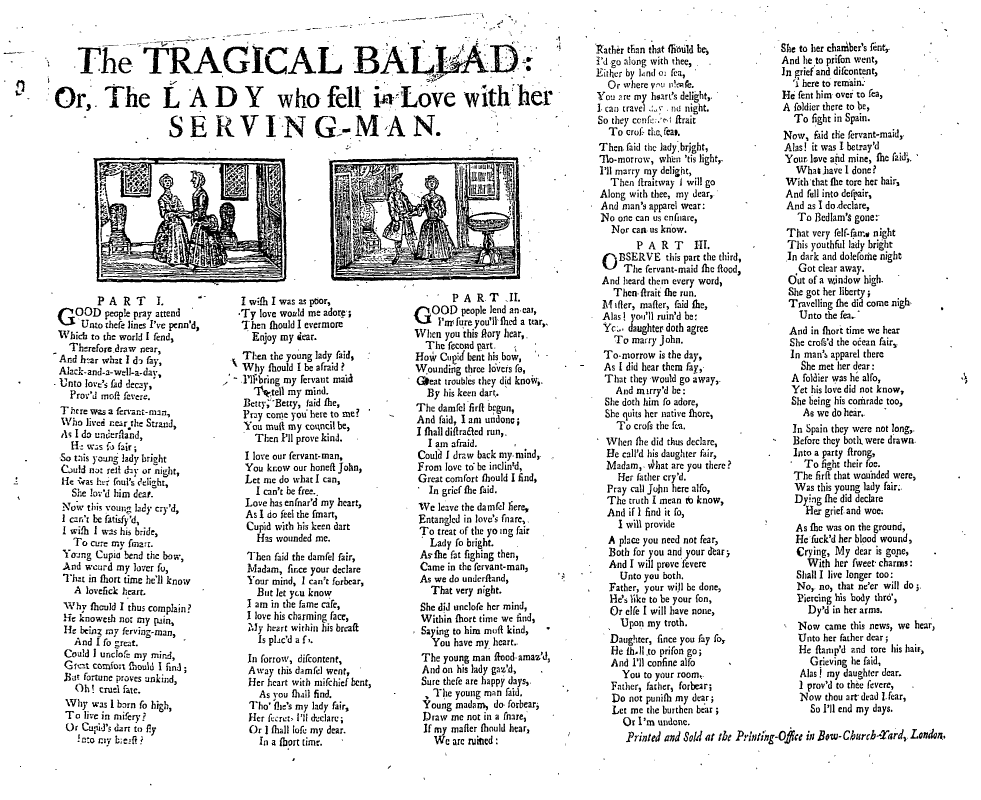Walt Whitman's "I Celebrate myself, and sing myself"

Walter "Walt" Whitman (born on May 31, 1819 - March 26, 1892) was an American poet, essayist and journalist. A humanist, he was a part of the transition between transcendentalism and realism, incorporating both views in his works. Whitman is among the most influential poets in the American canon, often called the father of free verse. His works was very controversial in its time, particularly his poetry collection Leaves of Grass, which was described as obscene for its overt sexuality. Early in is career, he also produced a temperance novel, Franklin Evans (1842). Whitman's major work, Leaves of Grass, was first published in 1855 with is own money. The work was an attempt at reaching out to the common person with an American epic. He continued expanding and revising it until his death in 1892.
From Wikipedia, the free encyclopedia
The Carpe Diem poem: Andrew Marvell's "To His Coy Mistress"

"To His Coy Mistress" is a metaphysical poem written by the English author and politician Andrew Marvell (1621 - 1678) either during or just before the English Interregnum (1649- 60). This poem is considered one of the Marvell's finest and is possibly the best recognized carpe diem poem in English. Although the date of its composition is not known, it may have been written in the early 1650s. At that time, Marvell was serving as a tutor to the daughter of the retired commander of the New Model Army, Sir Thomas Fairfax.
From Wikipedia, the free encyclopedia
Setting: Matthew Arnold - "Dover Beach"

"Dover Beach" is a lyric poem by the English poet Matthew Arnold. It was first published in 1867 in the collection New Poems, but surviving notes indicate its composition may have begun as early as 1849. The most likely date is 1851. The title, locate and subject of the poem's descriptive opening lines is the shores of the English ferry port of Dover, Kent, facing Calais, France, at the Strait of Dover, the narrowest part (21 miles)of the English Channel, where Arnold honeymooned in 1851.
From Wikipedia, the free encyclopedia
The Aubade: John Donne's "The Good- Morrow"

"The Good- Marrow" is a poem by John Donne, published in his 1633 collection Songs and Sonnets. Written while Donne was a student at Lincoln's Inn, the poem is one of his earliest works and is thematically considered to be the "first" work in Songs and Sonnets. Although referred to as a sonnet, the work does not follow the most common rhyming scheme of such works -a 14 line poem, consisting of an eight line stanza followed by a six line conclusion- but is instead 21 lines long, divided into three stanzas. "The Good- Morrow" is written from the point of view of an awaking lover and describes the lover's thoughts as he wakes next to his partner. The poem makes use of biblical and Catholic writings, indirectly referencing the legend of the Seven Sleepers and Paul the Apostle's description of divine, agapic love- two concepts with which, as a practising Catholic, Donne would have been familiar.
From Wikipedia, the free encyclopedia
W.H. Auden's "Stop all the clocks, cut off the telephone"

Wystan Hugh Auden (born on 21 February 1907 - 29 September 1973) was an Anglo- American poet, best known for love poems such as "Funeral Blues," poems on political and social themes such as "September 1, 1939" and "The Shield of Achilles," poems on cultural and psychological themes such as The Age of Anxiety, and poem on religious themes such as "For the Time Being" and "Horae Canonicae." He was born in York, grew up in and near Birmingham in a professional middle- class family. Auden was a prolific writer of prose essays and reviews on literary, political, psychological and religious subjects, and he worked at various times on documentary films, poetic plays, and other forms of performance. Throughout his career he was both controversial and influential, and criticial views on his work ranged from sharply dismissive, treating him as a lesser follower of W. B.Yeats and T. S. Eliot, to strongly affirmative, as in Joseph Brodsky's claim that he had "the greatest mind of the twentieth century".
From Wikipedia, the free encyclopedia
Poetry 3: Sound and Sense
Metaphor: William Shakespeare's "That time of year thou mayest in me behold"

In this poem, the speaker invokes a series of metaphors to characterize the nature of what he perceives to be his old age. In the first quatrain, he tells the beloved that his age is like a "time of year," late autumn, when the leaves have almost completely fallen from the trees, and the weather has grown cold, and the birds have left their branches. In the second quatrain, he ten says that his age is like late twilight, "As after sunset fadeth in the west," and the remaining light is slowly extinguished in the darkness, which the speaker likens to "Death's second self."In the third quatrain, the speaker compares himself to the glowing remnants of the logs that once enabled it to burn- and which will soon be consumed "by that which it was nourished by"- that is, it will be extinguished as it sinks into the ashes, which its own burning created.
Personification: Emily Dickinson's "Because I could not Stop for Death"

"Because I could not stop for Death" is a lyrical poem by Emily Dickinson first published posthumously in Poems: Series 1 in 1890. The persona of Dickinson's poem meets personified Death . Death is a gentleman caller who takes a leisurely carriage ride with the speaker to her grave. According to Thomas H. Johnson's variorum edition of 1955 the number of this poem is 712. The poem was published under the title "The Chariot". It is composed in six quatrains with the meter alternating between iambic tetrameter and iambic trimeter. Stanza 1,2,4 and 6 employ end rhyme in their second and fourth lines, but some of these are only close rhyme or eye rhyme. In the third stanza, there is no end rhyme, but "ring" in line 2 rhymes with "gazing"and "setting" in line 3 and 4 respectively.Internal rhyme is scattered throughout. Figures of speech include alliteration, anaphora, paradox, and personification.
From Wikipedia, the free encyclopedia
Simile and Analogy:" A Red, Red Rose" by Robert Burns

Robert Burns (25 January 1759- 21 July 1796), also known as Rabbie Burns, the Bard of Ayrshire and various other names and epithets, was a Scottish poet and lyricist. He is widely regarded as the national poet of Scotland and is celebrated worldwide. He is the best known of the poets who have written in the Scots language, although much of his writing is also in English and a light Scots dialect, accessible to an audience beyond Scotland. He also wrote in standard English, and in these writings his political or civil commentary is often at its bluntest. Other poems and songs of Burns that remain well known across the world today include "A Red, Red Rose","A Man's a Man for A' That","To a Louse", "To a Mouse", "The Battle of Sherramuir","Tam o' Shanter" and "Ae Fond Kiss".
From Wikipedia, the free encyclopedia
Edgar Allan Poe's "The Raven"

"The Raven" is a narrative poem by American writer Edgar Allan Poe. First published in January 1845, the poem is often noted for its musicality, stylized language, and supernatural atmosphere.It tells of a talking raven's mysterious visit to a distraught lover, tracing the man's slow fall into madness. The lover, often identified as being a student, is lamenting the loss of his love, Lenore. Sitting on a bust of Pallas, the raven seems to further instigate his distress with its constant reptition of the word "Nevermore".The poems makes use of a number of folk, mythological, religious, and classical references. "The raven"was first attributed to Poe in print in the New York Evening Mirror on January 29, 1845. Its publication made Poe widely popular in his lifetime, although it did not bring him much financial success. The poem was soon reprinted, parodied, and illustrated.
From Wikipedia, the free encyclopedia
Emily Dickinson's "A narrow Fellow in the Grass"

In this poem, "A narrow Fellow in the Grass", the poet writes about the speaker who sees a "a narrow fellow" in the grass which represents a snake that the speaker does not seem to know very well. As if the snake is an enigma it sometimes shows up in the grass suddenly. When the snake slither through the grass, the grass parts open like a comb is going through it. The snakes looks like a spotted stick for one second, and it can coil up and then open once again. The poem explains how the snakes likes to live in a boggy or swampy environment.The speaker likes to connect to the "nature's people" because he goes out to the swampy area barefoot and helpless many times that seems as if all the creatures already know him.
Henrik Ibsen.

Henrik Johan Ibsen ( born on 20 March 1828 - 23 May 1906) was a major 19th- century Norwegian playwright, theatre director, and poet. He is often referred to as "the father of realism" and is one of the founders of Modernism in theatre. His major works include Brand, Peer Gynt, An Enemy of the People, Emperor and Galilean, A Doll's House, Hedda Gabler, Ghost, The Wild Duck, Rosmersholm, and The Master Builder. He is the most frequently performed dramatist in the world after Shakespeare,and A Doll's House became the world's most performed play by the early 20th century.
From Wikipedia, the free encyclopedia
A Doll's House.

A Doll's House is a three - act play in prose by Henrik Ibsen. It premiered at the Royal Theatre in Copenhagen, Denmark, on 21 December 1879, having been published earlier that month. The play is significant for its critical attitude toward 19th century marriage norms. It aroused great controversy at the time, as it concludes with the protagonist, Nora, leaving her husband and children because she wants to discover herself. In 2006 , the centennial of Ibsen's death, A Doll's House held the distinction of being the world's most performed play for that year. UNESCO has inscribed Ibsen's autographed manuscripts of Doll's House on the Memory of the World Register in 2001, in recognition of their historical value.
From Wikipedia, the free encyclopedia
Richard Cory.

"Richard Cory" is a narrative poem written by Edwin Arlington Robinson. It was first published in 1897, as part of The Children of the Night, having been completed in July of that year; and it remains one of Robinson's most popular and anthologized poems. The poem describes a person who is wealthy, well educated, mannerly, and admired by the people in his town. Despite all this, he takes his own life. The song "Richard Cory", written by Paul Simon and recorded by Simon & Garfunkel for their second studio album, Sounds of Silence, was based on this poem.
From Wikipedia, the free encyclopedia
Synecdoche.

A synecdoche ("simultaneous understanding") is a figure of speech in which a term for a part of something refers to the whole of something or vice versa. A synecdoche is a class of metonymy, often by means of either mentioning a part of the whole or conversely the whole for one of its parts. Examples from common English expressions include "bread and butter" (for livelihood), "suits" (for "businesspeople"), and "boots" (for "soldiers"). Synecdoche also appears in the use of government buildings to refer to their occupant or agency, as "No.10" for the British Prime Minister or "The Pentagon" for the United States Department of Defense. Its adjectival and adverbial forms are synecdohic and synecdochically.
From Wikipedia, the free encyclopedia
Poetry.

Poetry is a form of literature that uses aesthetic and rhythmic qualities of language- such as phonaesthetics, sound symbolism, and metre -to evoke meanings in additon to, or in place of, the prosaic ostensible meaning. Poetry has a long history, dating back to the Sumerian Epic of Gilgamesh. Early poems evolved from folk songs such as the Chinese Shijing, or froms a need to retell oral epics, as with the Sanskrit Vedas, Zoroastrian Gathas, and the Homeric epics, the Iliad and the Odyssey. Ancient attempts to define poetry, such as Aristotle's Poetics, focused on the uses of speech in rhetoric, drama, song and comedy. Poetry uses forms and conventions to suggest differential interpretation to words, or to evoke emotive responses. Devices such as assonance, alliteration, onomatopoeia and rhythm are sometimes used to achieve musical or incantatory effects.
From Wikipedia, the free encyclopedia
La Belle Dame sans Merci.

"La Belle Dame sans Merci" (French for "The Beautiful Lady Without Mercy") is a ballad written by the English poet John Keats. It exists in two versions, with minor differences between them. The original was written by Keats in 1819. He used the title of the 15th- century La Belle Dame sans Mercy by Alain Charter, though the plots of the two poems are different. The poem is considered an English classic, stereotypical of other Keats's works. It avoids simplicity of interpretation despite simplicity of structure. At only a short twelve stanzas, of only four lines each, with a simple ABCD rhyme scheme, the poem is nonetheless full of enigmas, and has been the subject of numerous interpretations.
From Wikipedia, the free encyclopedia
Semele.

Semele, in Greek mythology, daughter of the Boeotian hero Cadmus and Harmonia, was the mortal mother of Dionysus by Zeus in one of his many origin myths. Certain elements of the cult of Dionysus and Semele came from the Phrygians. These were modified, expanded and elaborated by the Ionian Greek invaders and colonists. Herodotus, who gives the account of Cadmus, estimates that Semele lived sixteen hundred years before his time, or around 2000 B.C.E. In Rome, the goddess Stimula was identified as Semele.
From Wikipedia, the free encyclopedia
Dithyramb.

The dithyramb was an ancient Greek hymn sung and danced in honor of Dionysus, the god of wine and fertility; the term was also used as an epithet of the god; Plato, in The Laws, while discussing various kinds of music mentions "the birth of Dionysos, called, I think, the dithyramb. " Plato also remarks in the Republic that dithyrambs are the clearest example of poetry in which the poet is the only speaker. Plutarch contrasted the dithyramb's wild and ecstatic character with the paean. According to Aristotle, the dithyramb was the origin of Athenian tragedy. A wildly enthusiastic speech or piece of writing is still occasionally described as dithyrambic.
From Wikipedia, the free encyclopedia
Vocabulary.
1. Subgenre: 次文類

2. Rhyme Scheme: 格律

3. Ambiguity: 含糊;不明確;曖昧;模棱兩可的話

4. Solitude: 孤獨;隱居;荒僻的地方

5. Romances: 冒險故事;風流韻事;浪漫史;傳記體文學

6. Ballads: 民歌;敘事詩歌;創作敘事曲

7. Arms: 臂;【軍】武器;紋章;武裝

8. Anguish: 痛苦;苦惱

9. Fading: 褪色;衰退;凋謝

10. Thee: 你(古英語thou的賓格)
11. Ecstasy: 狂喜;入迷;忘形

沒有留言:
張貼留言